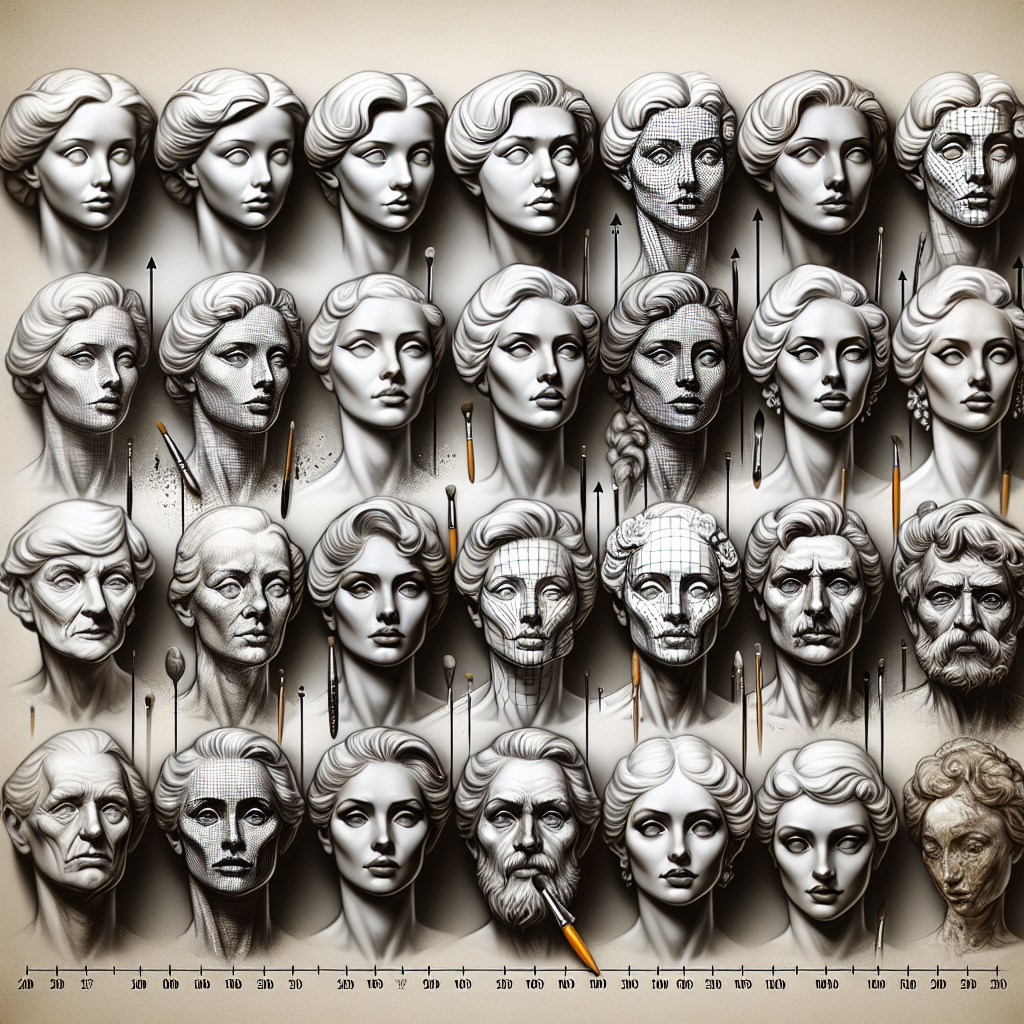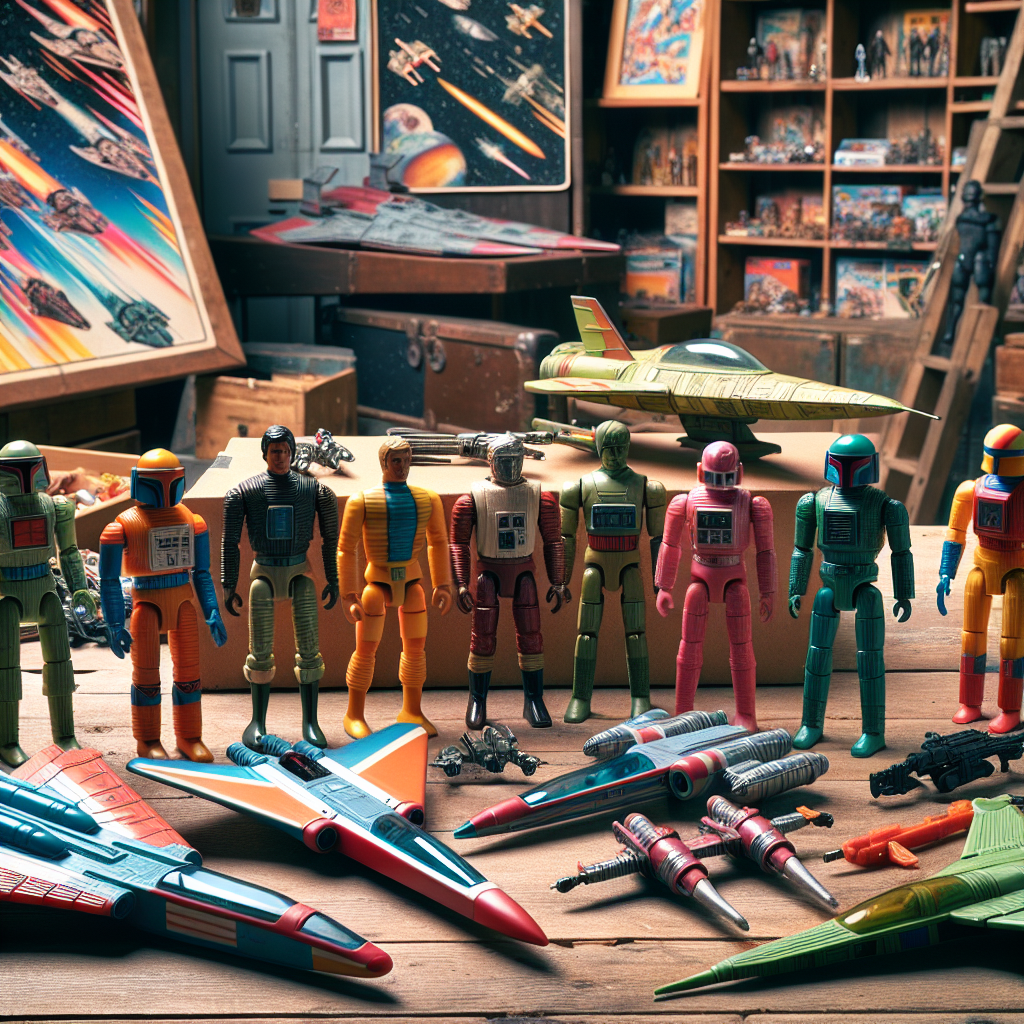The Evolution of Facial Sculpting and Paint Application Techniques
Facial sculpting and paint application techniques have evolved significantly over the decades, enriching the quality of collectibles, action figures, and character models. As artists and manufacturers continue to push the boundaries of creativity and technology, the art of face sculpts, paint apps, and detail work has not only become more refined but has also transformed the way we perceive characters. In this blog post, we will delve into the history of these techniques and explore how they have advanced to create highly detailed head sculpts that captivate collectors and fans alike.
The Early Days of Facial Sculpting
In the early days of toy production, face sculpts were primarily influenced by simple forms and basic features. Materials like hard plastic and vinyl limited detail work, resulting in head sculpts that often lacked realism. Paint apps were equally simplistic, consisting of basic colors and minimal shading. However, the introduction of improved methodologies, such as traditional sculpting techniques, soon heralded a new era.
- Traditional Sculpting: Craftsmen would use clay and other malleable materials to create initial face sculpts, which were then molded into production forms. This art required a keen eye for proportion and symmetry.
- Basic Painting Techniques: Early paint applications relied on a “one-size-fits-all” approach. Artists brushed colors over the surface without the nuanced techniques we see today.
The 1990s: A Leap in Detail Work
As the 1990s rolled in, the collectible market began to see significant advancements in both face sculpts and paint applications. Novel approaches to design and production commenced, leading to more realistic detailed work.
- Introduction of Digital Sculpting: With the rise of technology, artists started using computer software for sculpting face features, allowing for higher precision and intricate designs.
- Complex Paint Apps: The era also brought about a myriad of airbrush techniques that transformed mundane paint applications into multi-layered masterpieces, enhancing the realism of head sculpts.
The 21st Century: Hyper-Realism and Customization
The 21st century witnessed an explosion of creativity and craftsmanship in the realm of face sculpts. Today’s average collector has access to products with stunning levels of detail work that were once unthinkable.
- 3D Printing and Prototyping: Advanced technology such as 3D printing allows for the creation of highly detailed head sculpts, enabling artists to experiment and iterate faster than ever before.
- Custom Paint Apps: Artists now blend various techniques, such as washes and dry brushing, to achieve lifelike skin textures and eye reflections, raising the bar for detail work.
The Importance of Attention to Detail
As facial sculpting and paint applications continue to evolve, the emphasis on detail work has never been more critical. Collectors and enthusiasts appreciate the subtleties that enhance realism—like skin texture, freckles, or the characteristic glimmer of a character’s eye. Understanding the nuances in detail work has become essential for brands striving to capture the hearts of consumers.
- Facial Expression: The ability to convey emotions through nuanced facial sculpts enables character models to become more lifelike and relatable.
- Age and Characterization: Through careful sculpting and strategic paint applications, artists can create unique characteristics that reflect a character’s age or personality.
Future Trends in Facial Sculpting and Paint Applications
As we venture further into the future, several trends are likely to dictate the evolution of face sculpts and paint application techniques:
- Interactive Features: With advancements in technology, we might see face sculpts embedded with sensors that respond to touch or movement, giving them an interactive edge.
- Eco-Friendly Materials: The demand for sustainable production practices will likely result in innovative materials that are both aesthetically pleasing and environmentally friendly.
Conclusion
From the rudimentary face sculpts of the past to today’s hyper-realistic figures, the world of facial sculpting and paint application techniques has transformed dramatically. As artists continue to innovate and explore new methodologies, the importance of detail work remains critical in creating captivating head sculpts that resonate with fans and collectors. The evolution of face sculpts is a testament to the artistic endeavor and technological progress that shapes the landscape of collectibles today. Embracing both tradition and innovation will undoubtedly carve the future of this captivating art form.
Whether you are an avid collector, an artist, or simply a fan of detailed character models, there’s no denying that the evolution of facial sculpting and paint applications will continue to inspire and redefine the standards of excellence in this ever-expanding domain.




